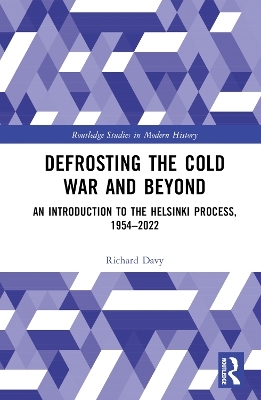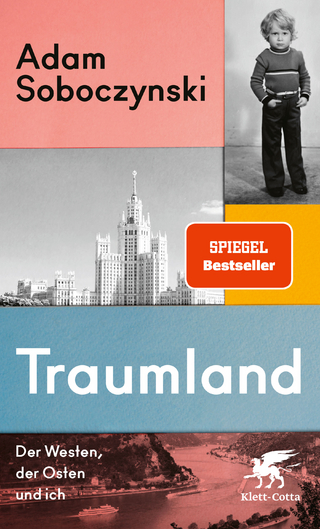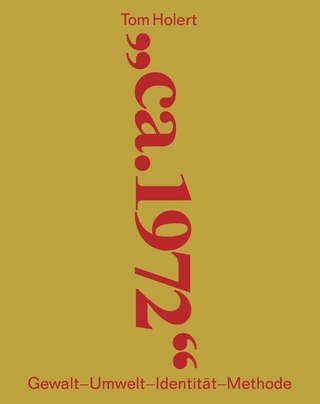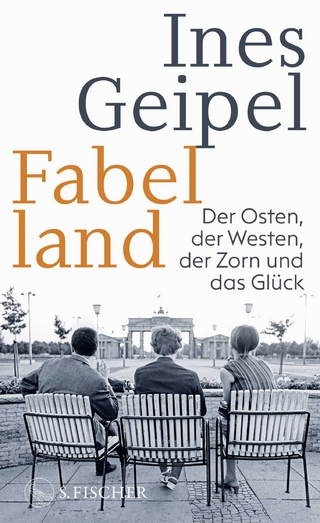
Defrosting the Cold War and Beyond
Routledge (Verlag)
978-0-367-70403-2 (ISBN)
This volume tells the story of the Helsinki Process from the immediate post-war period through the signing of the Helsinki Final Act in 1975 to the collapse of the Soviet empire and up to the present day. Treating it as a single narrative in the search for a just and stable order in Europe adds significantly to the copious but mostly narrowly focused academic literature on the subject.
Divided into 26 chapters, it can also serve as a handy reference book for different phases of the story. Chapter 22 examines the continuing debate over whether the West is responsible for the breakdown of relations with Russia and why the Helsinki Process failed to avert it. Chapter 26 asks whether the remarkable multilateral diplomacy that produced the Final Act could be replicated in other troubled areas today. It then offers 12 lessons that may be drawn from that experience.
Defrosting the Cold War and Beyond: An Introduction to the Helsinki Process, 1954–2022 will help students and others understand the long arc of the Helsinki process, its place in European history and its continuing relevance today. Drawing on the first-hand experience of the author and other sources, the book corrects common errors and identifies some of the key people involved.
Richard Davy graduated in Modern History from Magdalen College, Oxford University. After teaching in Italy and training in Edinburgh, he worked for nearly 30 years on The Times (London) as foreign correspondent in Germany, Washington and Eastern Europe, and as Chief Foreign Leader Writer specialising in East–West relations. He covered much of the Prague Spring of 1968 and the long negotiations that produced the Helsinki Final Act of 1975. Later he was a leader writer for The Independent, a guest scholar at the Woodrow Wilson Center, Washington DC, an Associate Fellow of the Royal Institute of International Affairs, and a Senior Member of St Antony’s College, Oxford University.
Preface
Acknowledgements
List of Abbreviations
Introduction What is the Helsinki Process ?
Section I Origins
Chapter 1 Where did it come from?
Chapter 2 Who started it?
Chapter 3 What were they afraid of?
Section II Moving Forward
Chapter 4 Khrushchev, the accidental helper
Chapter 5 Brezhnev, the deluded visionary
Chapter 6 1966: Dialogue of the deaf
Chapter 7 1967: Détente, but what was it?
Chapter 8 1968: Dubček, martyred by the “Brezhnev doctrine”
Chapter 9 1969–74: Willy Brandt, the realistic idealist
Chapter 10 1969: Now they are talking
Section III Heading for the Summit
Chapter 11 Dipoli 1972–3: Together at last
Chapter 12 1973: Setting up base camp in Geneva
Chapter 13 1973–5: The long climb to the summit
Part I Slogging up the lower slopes
Part II The final stretch
Chapter 14 1975: Views from the summit
Chapter 15 Coming down to earth
Section IV Follow-up
Chapter 16 Belgrade 1977–8: Human rights and wrongs
Chapter 17 Madrid 1980–83: The stress test
Chapter 18 1985–6: Four meetings and the first breakthrough
Chapter 19 Vienna 1986–9: The ice cracks
Chapter 20 Paris 1990: Euphoria
Chapter 21 Helsinki II 1992: Gloom
Section V Where to now?
Chapter 22 Was an opportunity missed ?
Chapter 23 The OSCE: more members, same tasks, rough road
Chapter 24 ODIHR: Human Rights and dodgy elections
Chapter 25 Conclusions, achievements, legacy
Chapter 26 Can Helsinki be a model for other trouble spots?
Appendix I Guide to the Final Act
Appendix II Key points of the Vienna Document
Bibliography
Index
| Erscheinungsdatum | 12.01.2023 |
|---|---|
| Reihe/Serie | Routledge Studies in Modern History |
| Verlagsort | London |
| Sprache | englisch |
| Maße | 156 x 234 mm |
| Gewicht | 600 g |
| Themenwelt | Geschichte ► Allgemeine Geschichte ► Zeitgeschichte |
| Sozialwissenschaften ► Politik / Verwaltung ► Europäische / Internationale Politik | |
| ISBN-10 | 0-367-70403-X / 036770403X |
| ISBN-13 | 978-0-367-70403-2 / 9780367704032 |
| Zustand | Neuware |
| Haben Sie eine Frage zum Produkt? |
aus dem Bereich


